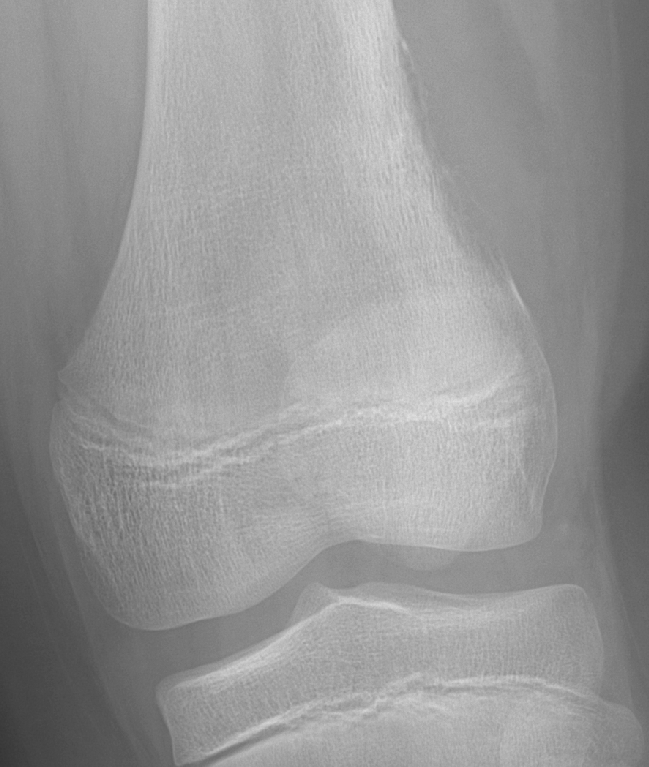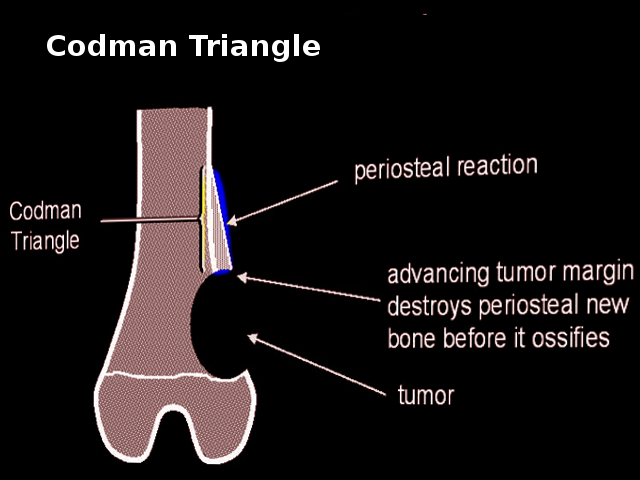[1]
Gemescu IN, Thierfelder KM, Rehnitz C, Weber MA. Imaging Features of Bone Tumors: Conventional Radiographs and MR Imaging Correlation. Magnetic resonance imaging clinics of North America. 2019 Nov:27(4):753-767. doi: 10.1016/j.mric.2019.07.008. Epub
[PubMed PMID: 31575404]
[2]
Wenaden AE, Szyszko TA, Saifuddin A. Imaging of periosteal reactions associated with focal lesions of bone. Clinical radiology. 2005 Apr:60(4):439-56
[PubMed PMID: 15767101]
[3]
Mallon WJ. E. Amory Codman, surgeon of the 1990s. Journal of shoulder and elbow surgery. 1998 Sep-Oct:7(5):529-36
[PubMed PMID: 9814935]
[4]
Bisseret D, Kaci R, Lafage-Proust MH, Alison M, Parlier-Cuau C, Laredo JD, Bousson V. Periosteum: characteristic imaging findings with emphasis on radiologic-pathologic comparisons. Skeletal radiology. 2015 Mar:44(3):321-38. doi: 10.1007/s00256-014-1976-5. Epub 2014 Oct 1
[PubMed PMID: 25269751]
[5]
Berger-Richardson D, Swallow CJ. Needle tract seeding after percutaneous biopsy of sarcoma: Risk/benefit considerations. Cancer. 2017 Feb 15:123(4):560-567. doi: 10.1002/cncr.30370. Epub 2016 Nov 2
[PubMed PMID: 27859013]
[6]
Murphey MD, Robbin MR, McRae GA, Flemming DJ, Temple HT, Kransdorf MJ. The many faces of osteosarcoma. Radiographics : a review publication of the Radiological Society of North America, Inc. 1997 Sep-Oct:17(5):1205-31
[PubMed PMID: 9308111]
[7]
Maygarden SJ, Askin FB, Siegal GP, Gilula LA, Schoppe J, Foulkes M, Kissane JM, Nesbit M. Ewing sarcoma of bone in infants and toddlers. A clinicopathologic report from the Intergroup Ewing's Study. Cancer. 1993 Mar 15:71(6):2109-18
[PubMed PMID: 8443760]
[8]
Jobke B, Werner M. [Osteogenic tumors of bone]. Der Radiologe. 2016 Jun:56(6):489-506. doi: 10.1007/s00117-016-0119-5. Epub
[PubMed PMID: 27255551]
[9]
Whelan JS, Davis LE. Osteosarcoma, Chondrosarcoma, and Chordoma. Journal of clinical oncology : official journal of the American Society of Clinical Oncology. 2018 Jan 10:36(2):188-193. doi: 10.1200/JCO.2017.75.1743. Epub 2017 Dec 8
[PubMed PMID: 29220289]
[10]
Kundu ZS. Classification, imaging, biopsy and staging of osteosarcoma. Indian journal of orthopaedics. 2014 May:48(3):238-46. doi: 10.4103/0019-5413.132491. Epub
[PubMed PMID: 24932027]
[11]
Moore DD, Luu HH. Osteosarcoma. Cancer treatment and research. 2014:162():65-92. doi: 10.1007/978-3-319-07323-1_4. Epub
[PubMed PMID: 25070231]
[12]
Lima AL, Oliveira PR, Carvalho VC, Cimerman S, Savio E, Diretrizes Panamericanas para el Tratamiento de las Osteomielitis e Infecciones de Tejidos Blandos Group. Recommendations for the treatment of osteomyelitis. The Brazilian journal of infectious diseases : an official publication of the Brazilian Society of Infectious Diseases. 2014 Sep-Oct:18(5):526-34. doi: 10.1016/j.bjid.2013.12.005. Epub 2014 Apr 1
[PubMed PMID: 24698709]



